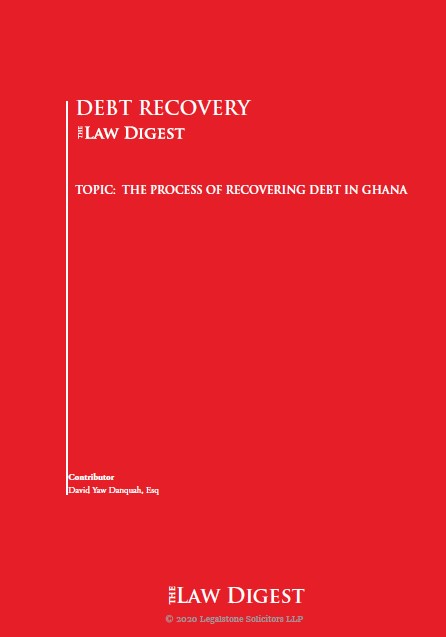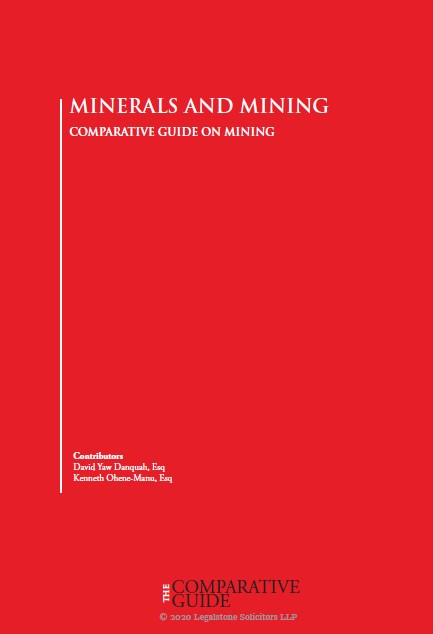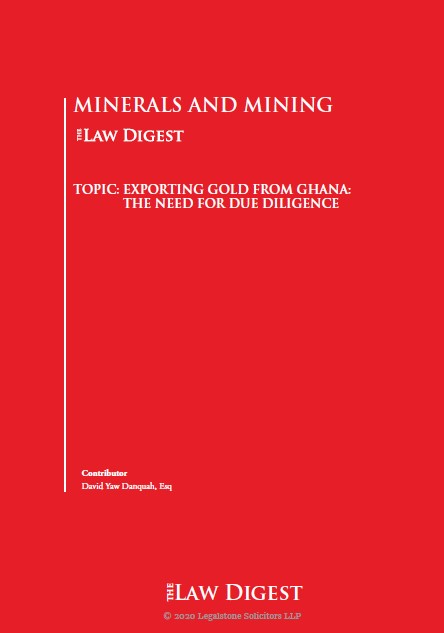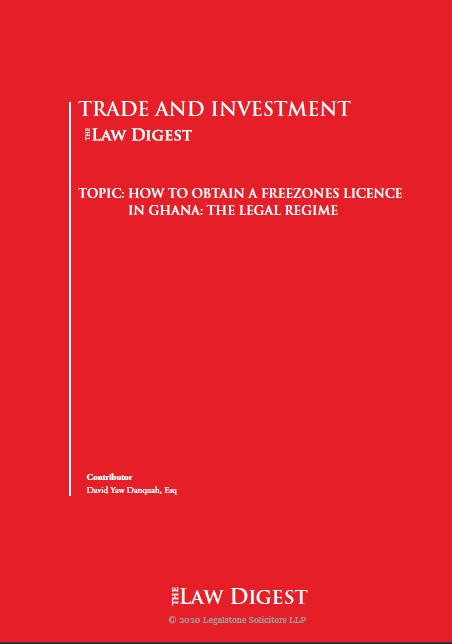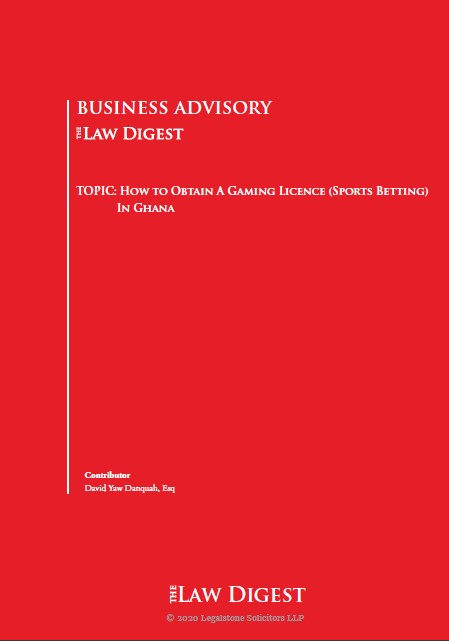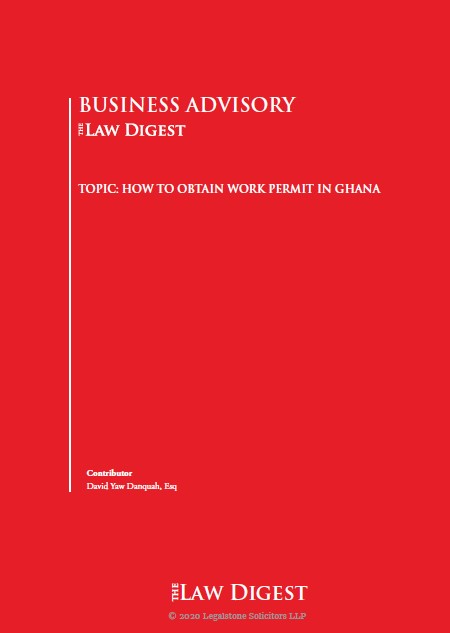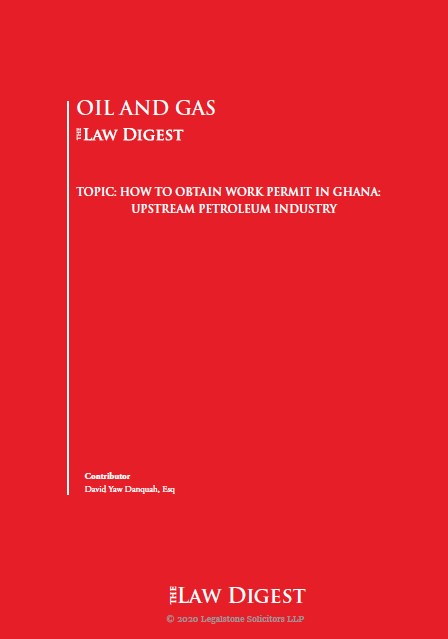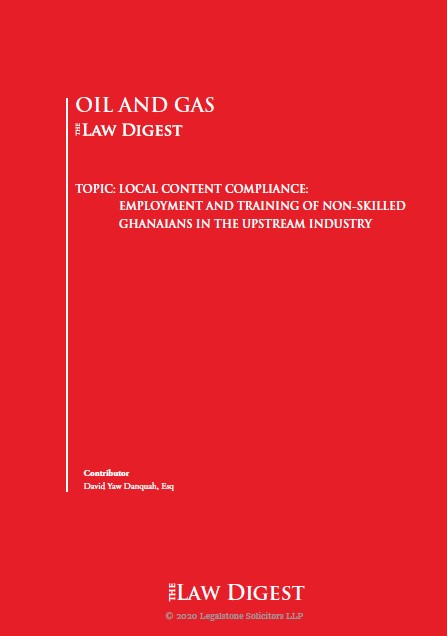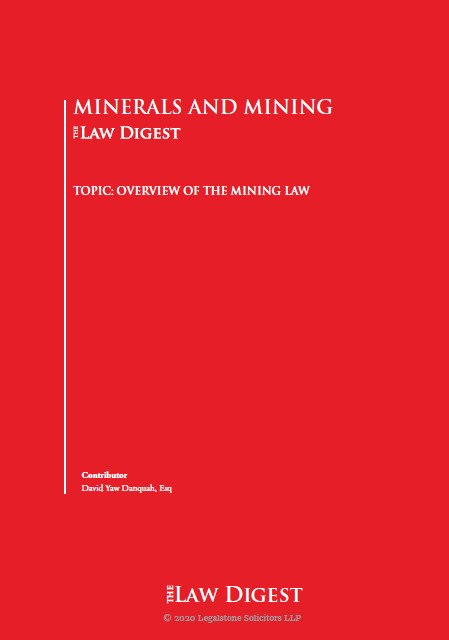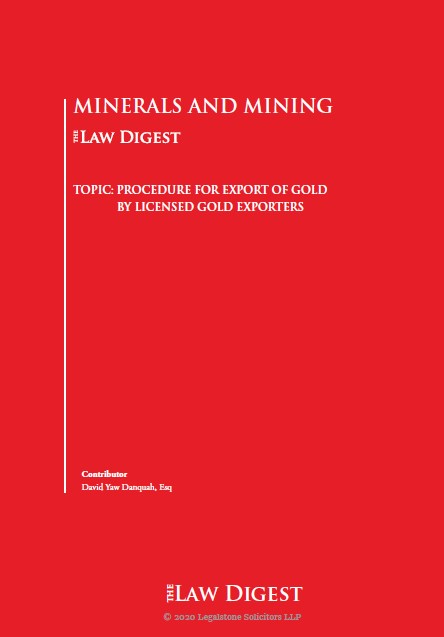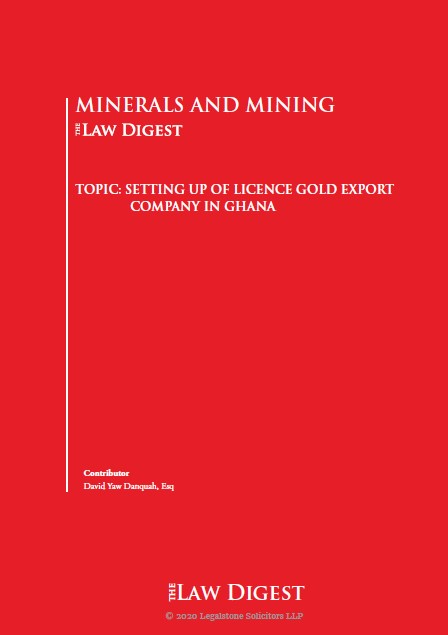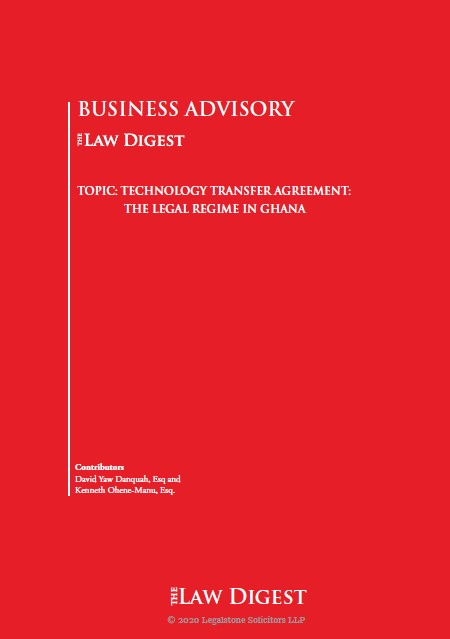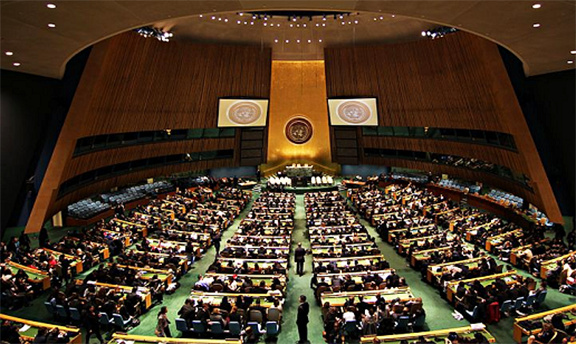
1. Introduction
The toll of the war in Syria is astonishing and tragic. Over 10 million people have fled their homes since the war began in March 2011. Four million have fled Syria altogether, and 13.5 million people still inside the country require humanitarian assistance.1 Several hundred thousand have been killed.2Neighbouring countries are dealing with massive population influx, while others, further away, struggle with acts of terror apparently planned and directed from within Syrian territory.
It is also a war characterized by terrifying brutality and systemic disrespect for the most basic rules of international humanitarian law, ranging from the promotion of enslavement on an industrial scale, to indiscriminate attacks on civilians.3 Since the United Nations (UN) Human Rights Council established an Independent International Commission of Inquiry on the Syrian Arab Republic (CoI) on 22 August 2011, it has produced more than 20 outputs documenting violations and abuses committed by the Syrian government, anti-government armed groups and terrorist organizations, in particular Islamic State in Iraq and the Levant (ISIL). A special inquiry established by the UN Security Council in August 2016 also identified ‘sufficient information’ of use of chemical weapons which may amount to war crimes and crimes against humanity.4
Yet the war in Syria has also laid bare the limits of existing approaches to the maintenance of international peace and security, and international justice. By late 2016, over five years into the war, the UN Security Council had not only failed, but on six separate occasions positively declined, to act to resolve this horrifying situation. Six times draft Resolutions on the war in Syria had been vetoed by at least one Permanent Member, several of them proposing steps to ensure those committing international crimes during the war could be held accountable, for example through referral of the situation to the International Criminal Court (ICC). A seventh refusal to act was added to the list as we wrote this article, with the Security Council this time declining to pursue accountability for the use of chemical weapons.5 Disagreement among the veto powers has time and again rendered the Security Council unable to act, at the expense not only of the Syrian people, but international peace and security itself.
It was against this backdrop of Security Council inaction, effectively engendering impunity for the ongoing, massive violations of international humanitarian law in Syria, that the UN General Assembly took action on 21 December 2016. In Resolution 71/248 the General Assembly established an ‘International, Impartial and Independent Mechanism to Assist in the Investigation and Prosecution of Those Responsible for the Most Serious Crimes under International Law Committed in the Syrian Arab Republic since March 2011’ (hereafter ‘the Mechanism’).6 The Resolution, passed with 105 affirmative votes, 52 abstentions and 15 negative votes, is significant in two ways. First, because it establishes a mechanism that increases the prospects of justice for Syria. Secondly, because it represents an important development in the history of international criminal justice, showing how the UN General Assembly can play a constructive role to support efforts to ensure respect for international criminal law, through international cooperation.
This short article begins by explaining what the Mechanism is and how it will function. Next, it considers how the Resolution establishing it was negotiated and adopted, and considers three legal objections raised to the validity of the establishment of the Mechanism: that it violates Article 2(7) of the UN Charter (on non-interference in domestic affairs); that it violates Article 12 of the Charter (regulating the relationship between the Security Council and the General Assembly); and that the General Assembly did not have power to create a prosecutorial body.
We argue that the Mechanism, rather than having prosecutorial powers itself, will assist states and other bodies with such powers to exercise them. It is not interference in Syria’s domestic affairs, because it aims to help any actor with valid jurisdiction over international crimes in Syria — in particular Syria itself, but also any other state or, potentially, an international court of tribunal endowed validly, in the future, with such jurisdiction. We further argue that it was open to the General Assembly to act in this way, based on established precedents and practice, including those based on Article 12 of the UN Charter. We explain how the General Assembly has previously provided analogous support to international mechanisms providing legal assistance for the prosecution of serious, international and transnational crimes, such as the Special Court for Sierra Leone (SCSL), the Extraordinary Chambers in the Courts of Cambodia (ECCC), and the Independent Commission Against Impunity in Guatemala (CICIG). There are even limited parallels with the legal aid afforded through a UN Trust Fund for Victims of Trafficking in Persons. And we show that even if the Mechanism is itself understood as having a judicial character because of its potential assistance to judicial processes, there is no bar to the General Assembly creating such a body: in fact it has already done so, over 60 years ago, in a move later approved by the International Court of Justice (ICJ).
Finally, we consider the implications of the Mechanism for Syria, and for international criminal justice more broadly. We argue that the Mechanism offers concrete hope for justice in Syria, and represents a significant crystallization of an important new approach to international criminal justice.
2. The Mechanism
The preambular and opening operative paragraphs of Resolution 71/248 emphasize the General Assembly’s concern ‘to ensure accountability’ for international crimes ‘through appropriate, fair and independent investigations and prosecutions at the domestic or international level’.7 The General Assembly also ‘stresses the need to pursue practical steps towards this goal to ensure justice for all victims and to contribute to the prevention of future violations’,8 and that any political process aimed at resolving the crisis in Syria must ensure accountability in order to ‘bring about reconciliation and peace’.9 The third operative paragraph recalls that states have ongoing efforts to ‘investigate and prosecute crimes within their jurisdiction committed in the Syrian Arab Republic’, and welcomes such efforts in accordance with national and international law.10
These opening paragraphs serve to make clear that Resolution 71/248 intends to allow states to use their existing sovereign powers and jurisdiction to secure peace and justice, in accordance with their obligations under the UN Charter.
On that basis, the Resolution establishes the Mechanism, under the auspices of the UN, to closely cooperate with the CoI to:
- ‘collect, consolidate, preserve and analyse evidence of violations of international humanitarian law and human rights violations and abuses’; and
- ‘prepare files in order to facilitate and expedite fair and independent criminal proceedings, in accordance with international law standards, in national, regional or international courts or tribunals that have or may in the future have jurisdiction over these crimes, in accordance with international law’.11
The nature of these functions makes clear that the Mechanism is itself not a prosecutorial body, but rather ‘quasi-prosecutorial’.12 The Mechanism prepares material for use by other actors in criminal proceedings; it is not itself an actor in those criminal proceedings. As the subsequently issued UN Secretary-General’s Report on the Mechanism makes clear, it ‘provides assistance’,13 developing criminal files to facilitate and expedite future criminal proceedings — wherever they may take place. Indeed, the very name of the Mechanism makes clear that its role is ‘to Assist’. It will not, unlike the international criminal tribunals created by the UN Security Council, have inherent power to compel cooperation or punish contempt.14 Instead, it operates as a centre for international criminal and judicial cooperation: hence, the General Assembly calls upon all states, all parties to the conflict, civil society and the UN system as a whole, to cooperate with the Mechanism and the CoI, including by providing information, documentation and other forms of assistance, such as witness and victim services or specific expertise.15
The Resolution set out a process for the Secretary-General, supported by the Office of the High Commissioner for Human Rights, to develop terms of reference for the Mechanism within 20 days, and requested a report on implementation from the Secretary-General within 45 days.16 Both requirements were addressed in a report from the Secretary-General issued on 19 January 2017.17 The annexed Terms of Reference for the Mechanism explained its mandate, methodology, legal framework, protection of victims and witnesses provisions, composition and funding — and the steps envisaged to ensure the speedy establishment and full functioning of the Mechanism.18
As explained by the Secretary-General, the Mechanism is mandated to ‘collect evidence or relevant information’ by receiving it from other sources, and ‘as appropriate, [to] collect additional evidence or information, including interviews, witness testimony, documentation and forensic material’.19 Its focus is the crimes of genocide, war crimes and crimes against humanity.20This evidence and information will be systematically organized ‘so as to ensure that their use can be maximized in future criminal investigations and prosecutions’,21 and recorded and preserved ‘in order to maximize the possibility of its admissibility in future legal proceedings’, for example through ensuring uninterrupted chain of custody.22
Using that evidence and information, the Mechanism will
seek to establish the connection between crime-based evidence and the persons responsible, directly or indirectly, for such alleged crimes, focusing in particular on linkage evidence. It focuses on evidence pertaining to mens rea and to specific modes of criminal liability, including under the principle of command or superior responsibility established under international criminal law.23
This will be achieved through ‘a methodical analysis of evidence, facilitated by advanced, state-of-the-art criminal investigative and prosecutorial software’.24 The aim is to ‘prepare files focusing on the criminal conduct of the persons responsible’.25 To further assist utilization of this material, the Mechanism will conduct a preliminary assessment of material ‘based on its reliability and probative value, identifying gaps in evidence and documentation and/or the need for additional information’ — in essence, showing prosecutors where further investigative work remains to be done.26The Mechanism will adopt procedures based on existing international criminal law standards and international criminal tribunal best practices,27including relating to witness and victim protection and services.28
This information will be shared with national, regional or international courts or tribunals with jurisdiction in accordance with international law, to ‘facilitate and expedite fair and independent criminal proceedings’.29 This may occur at the court or tribunal’s request, or on the Mechanism’s initiative.30 But ‘it is anticipated that the Mechanism will generally not share information in circumstances in which a trial may be held in absentia on the basis of universal jurisdiction’,31 where the jurisdiction does not respect international human rights law and standards, or where the application of the death penalty would apply for the offences under consideration.32
The Mechanism will be seated in Geneva, facilitating cooperation with the CoI.33 It will be run by a ‘senior judge or prosecutor with extensive experience in criminal investigations and prosecutions, at the Assistant Secretary-General level, and a deputy with extensive experience in international criminal justice and an in-depth knowledge of international criminal law, international human rights law and international humanitarian law’. These personnel will be appointed by the Secretary-General in consultation with the High Commissioner for Human Rights and the Legal Counsel,34 and will discharge their functions independent of governments or external sources.35They will be supported by a gender-balanced secretariat of staff with relevant expertise and representing diverse legal traditions,36 and will be phased into operation. The Mechanism is expected to be functional by the second half of 2017, and report twice a year to the General Assembly from 2018 onwards, while preserving the confidential nature of its substantive work.37
The co-sponsors of the Resolution had hoped that the Mechanism would be funded from the regular budget of the UN system (to which all UN Member States contribute), but the timing of its submission did not allow for such an approach, due to the budget cycle of the UN — and certainly approval of the Resolution would not have been helped by provisions of regular budget funding. In order to secure passage of the Resolution, the text reflects a commitment that, initially, the Mechanism will be funded by voluntary contributions — though the Resolution makes clear this is to be revisited ‘as soon as possible’.38 At the time of writing, 13 countries had promised funds for the Mechanism,39 though this is likely to have increased by the date of publication.
3. Negotiation of the Resolution and Legal Questions
The text of Resolution 71/248 was drafted by Liechtenstein and consulted initially in a group of like-minded states coordinated jointly by Qatar and Liechtenstein. In the framework of this group, the idea of the Mechanism was gradually developed in the months preceding consideration by the General Assembly, with additional states and groupings included in outreach over time. The initiative was the result of frustration over inaction of the Security Council in Syria, in particular in the area of accountability where the attempt to refer the situation in Syria to the ICC had been vetoed in 2014, but indeed far beyond. More specifically, it was presented against the background of the well-documented siege and assault of Aleppo which created the strong reaction in the UN membership that led to the adoption first of the humanitarian resolution presented by Canada and then of Resolution 71/248 itself.
The text was widely consulted bilaterally, in regional groups and in one round of open consultation. It was ultimately sponsored by 59 countries, hailing from every UN regional group.40 Six sponsors were from the Middle East, with the Resolution adopted following a call for accountability from the League of Arab States.41 Three Permanent Members of the Security Council co-sponsored the Resolution — France, the UK and the United States. American and British support for the Resolution was only confirmed quite late in the negotiation process, after considerable internal debate in Washington and Whitehall. Support if provided earlier might arguably have led to a greater number of co-sponsors, and indeed more affirmative votes.
The draft Resolution was brought directly to the Plenary of the General Assembly, under the agenda item on ‘Prevention of armed conflict’. Under the same agenda item, the General Assembly had discussed the war in Syria in 2012,42 and just two weeks earlier in 2016.43 The draft Resolution was debated in plenary on the afternoon of 21 December 2016 and adopted with 105 countries voting in favour, 52 abstaining and 15 voting against.44
Both during and after the debate on the Resolution, several states that voted against the Resolution raised questions about the legal basis for, and implications of, the Resolution. The Syrian delegation raised several pointed questions, while the Russian Federation also recorded its concerns in a note verbale subsequently sent to the Secretary-General, which was later circulated to the General Assembly.45 In the sections that follow we summarize and assess these various objections.
A. Does Resolution 71/248 Violate Article 2(7) of the UN Charter?
At the very outset of Resolution 71/248, the General Assembly proclaims that it is acting ‘Guided by the Charter of the United Nations’ and ‘Reaffirming its commitment to the sovereignty of the Syrian Arab Republic’. Yet several states, notably the Syrian Arab Republic, challenged this characterization, arguing that the draft Resolution violated Article 2(7) of the UN Charter.46
Article 2(7) states: ‘Nothing contained in the present Charter shall authorize the United Nations to intervene in matters which are essentially within the domestic jurisdiction of any state or shall require the Members to submit such matters to settlement under the present Charter; but this principle shall not prejudice the application of enforcement measures under Chapter VII.’ The question here is whether Resolution 71/248 does anything that authorizes the UN to ‘intervene in matters which are essentially within the domestic jurisdiction’ of Syria, or any other country.
The Representative of the Syrian Arab Republic argued thus, indicating that a mechanism such as that envisaged in the draft Resolution could only be established by agreement with the affected state, or, alternatively, by the Security Council under Chapter VII of the UN Charter.47 The establishment of the Mechanism, he argued, ‘undermines the legal jurisdiction and procedures’ of Syria, and represented an attempt to ‘legitimize external interference’ under ‘furtive language, ambiguous terminology and bombastic expressions’.48 Several other delegations supported this argument,49 and it is further elaborated in the subsequent Russian note verbale.50
This misreads the powers of the Mechanism. Resolution 71/248 is framed as an effort by the General Assembly to establish a Mechanism that ‘assists’ in the exercise of existing powers and jurisdiction to enforce international law.51There is nothing in it that purports to expand states’ jurisdiction, nor even less to reduce or interfere in Syrian jurisdiction. The Mechanism rather aims to assist states and international courts or tribunals to exercise their existing jurisdiction to investigate and punish genocide, war crimes and crimes against humanity. Put another way, Resolution 71/248 does not prevent Syria exercising its jurisdiction over international crimes committed on its territory. In the event that the Syrian judiciary were willing and able to exercise its jurisdiction over these crimes in accordance with relevant international standards, it would be the first in line to benefit from the Mechanism’s assistance.
Indeed, the Secretary-General’s Report makes clear that:
The establishment of the Mechanism notwithstanding, under international law the primary burden rests with the Syrian Arab Republic and other States having jurisdiction to investigate, promptly, thoroughly, independently and impartially, any allegation of human rights violations or abuses, violations of international humanitarian law and international crimes, to prosecute those responsible and to ensure that victims have access to an adequate and effective remedy for such violations, as well as full redress and guarantees of non-recurrence.52
Moreover, irrespective of the Mechanism’s existence, some states are already exercising their jurisdiction under the universal jurisdiction principle to try international crimes allegedly committed during the war in Syria, including in relation to allegations of war crimes53 and torture.54
This debate thus recalls the debate 20 years ago over the establishment of the ICC. In that case, some critics argued that the ICC represented a reduction of state sovereignty. Others, in contrast, recognized that it represents an institution through which states can more effectively exercise their sovereignty, through international cooperation, offering a jurisdiction of last resort where no state is able and willing to exercise jurisdiction.55 The Mechanism should be considered in that light, as grounded in the principle of complementarity, also reflected in the Rome Statute.
B. Did Resolution 71/248 Violate Article 12 of the UN Charter?
A second line of attack argues that Resolution 71/248 is ultra vires the powers of the General Assembly. Prior to voting on the Resolution, the Permanent Representative of Syria pointed to Article 12(1) of the UN Charter, which reads: ‘While the Security Council is exercising in respect of any dispute or situation the functions assigned to it in the present Charter, the General Assembly shall not make any recommendation with regard to that dispute or situation unless the Security Council so requests.’
The Syrian representative argued that under Article 12(1), the fact that the Security Council continued to discuss the war in Syria barred the General Assembly from considering the matter. The draft Resolution, he argued, represented an attempt to interfere in and politicize the Council’s ongoing political efforts to resolve the war in Syria.56 Several states echoed this legal analysis, with the representative of South Africa arguing that ‘the draft resolution seeks to oblige the Assembly to do the work of the Security Council’.57 The subsequent Russian note verbale also makes a similar point.58
The argument that the General Assembly is usurping the authority of the Security Council is somewhat undermined by the Resolution’s co-sponsorship by six members of the Security Council at the time: France, Italy, Sweden, Ukraine, UK and the United States. And just two weeks earlier, the General Assembly had adopted a Canadian-drafted Resolution making recommendations on Syria, including ‘practical steps’ to ensure accountability for crimes, suggesting Article 12(1) was no bar to General Assembly action.59
Yet the Syrian delegation pressed this argument to the point of seeking a legal ruling from the President, Mr Peter Thomson (Fiji), before the vote was taken. The Syrian delegation was afforded the opportunity to contest the subsequent ruling by the President, but declined to do so. The President of the General Assembly made clear, correctly we believe, that the validity of this objection turns on the question under Article 12(1) of whether the Security Council ‘is exercising’, in this case, the functions assigned to it. The President indicated that these words
have consistently been interpreted as meaning exercising at this moment, and consequently the Assembly has made recommendations on matters that the Security Council was also considering. The accepted practice of the General Assembly to consider, in parallel with the Security Council, the same matter concerning the maintenance of international peace and security has also been noted by the International Court of Justice in its advisory opinion of 2004.60
The President of the General Assembly appears to have been relying on three different sources of authority and precedent, each of which deserves some explanation and discussion.61
First, his reference to ‘is exercising … meaning exercising at this moment’ suggests the President of the General Assembly was relying on a 1968 opinion of the UN Legal Counsel. At the 1637th meeting of the General Assembly’s Third Committee on 12 December 1968, the Legal Counsel was asked by the representative of Peru whether the General Assembly had power to adopt a draft Resolution which would call on states to sever all relations with South Africa, Portugal and the illegal minority regime in Southern Rhodesia.62 The matters relating to South Africa, territories under Portuguese rule and Southern Rhodesia were, at the time, on the agenda of the Security Council. The Legal Counsel indicated that ‘the Assembly had interpreted the words “is exercising” [in Article 12] as meaning “is exercising at this moment” [and] consequently, it had made recommendations on other matters which the Security Council was also considering’, when it was not considering them at that moment.63 Member States have frequently relied on that legal opinion in the half-century since.64
Secondly, in his remarks on 21 December 2016, the President of the General Assembly relied explicitly on ‘the accepted practice of the General Assembly to consider, in parallel with the Security Council, the same matter concerning the maintenance of international peace and security’. This practice is extensive. The 1968 legal opinion already made this clear, and an even earlier legal opinion from 1964 listed Congo (1960–1961);65 Angola (1961);66 Tunisia (1961);67 Palestine;68 South Africa (1960–1963);69 territories under Portuguese rule;70 and Southern Rhodesia.71 In several of these instances the General Assembly specifically initiated investigations on matters that the Security Council was considering.72
The practice has only become more extensive in the subsequent half-century. Examples of the General Assembly considering and making recommendations on matters on the agenda of the Security Council now include the Middle East, Namibia, East Timor, the Western Sahara, Kosovo, Afghanistan, the occupied Palestinian territory, measures to eliminate international terrorism, and even trafficking in persons.73 One authoritative commentary on the UN Charter, edited by the former Judge of the ICJ Bruno Simma concludes, on the basis of this practice, that Article 12(1) permits action by the General Assembly where such action neither directly contradicts the position of the Security Council nor has been expressly rejected by it.74 Thus, for example, in the case of Bosnia and Herzegovina, the General Assembly adopted resolutions recommending the lifting of an arms embargo, even as the Security Council had considered but decided not to act upon the idea.75 Thus, the Council’s unwillingness to institute accountability for crimes in Syria is no bar to the General Assembly taking steps in this regard, since the Council has not explicitly rejected the possibility of accountability.
Thirdly, the President of the General Assembly appears to have relied on the 2004 decision of the ICJ in the Israeli Wall Case.76 In that case the question was raised whether a request from the General Assembly to the ICJ for an advisory opinion was consistent with Article 12(1). The ICJ opinion indicates that it was,77 an analysis affirmed six years later in an Advisory Opinion concerning the legality of the declaration of independence of Kosovo.78 These opinions make clear that the General Assembly has power to make recommendations initiating at least one kind of judicial process — an ICJ advisory opinion — pertaining to a certain dispute or situation, even as the Security Council retains a related item on its agenda.
What this all makes clear is that it is open to the General Assembly to make recommendations under Articles 10–12 of the Charter, even if a matter is on the agenda of the Security Council, if the Security Council is not at that moment — i.e. simultaneously, actually and actively — considering the issue.79 (And, in fact, the Security Council had not, at the time, actively considered accountability issues in Syria since a proposal to refer the situation to the ICC was vetoed in May 2014.) The practice of the General Assembly seems to suggest that it can address different, and usually more limited, aspects of the matter than the broad politico-military questions covered by the ‘situation’ on the agenda of the Security Council.80 On Palestine, for example, the General Assembly has made recommendations on specific issues such as the construction of a wall and the occupation of East Jerusalem, even while the larger Israeli–Palestinian dispute as a whole remains on the agenda of the Security Council.81 In the case of Syria, it was thus certainly open to the General Assembly to make recommendations as it did in Resolution 71/248 on the questions of accountability, even as the Security Council continued to consider broader questions of the resolution of the armed conflict.82
Finally, it is also worth noting that some delegations also raised a related argument: that under Article 12(2), the General Assembly is entitled to consider a matter only if the Secretary-General has formally indicated that the Security Council is no longer considering it — which was not the case here.83 This is a straightforwardly erroneous reading of Article 12(2), on its face. Article 12(2) is an administrative provision that ensures that, through notifications provided by the Secretary-General, the General Assembly has the information it needs about the matters being ‘dealt with’ by the Security Council, in order then to go on to consider whether the Security Council ‘is exercising’ its functions (as detailed in Article 12(1)). The appearance of a ‘matter’ on the list provided under Article 12(2) does not automatically indicate that it is a ‘dispute or situation’ over which the Security Council ‘is exercising’ its functions, and that the General Assembly is consequently barred from making recommendations on it.84
C. Can the General Assembly Create a Subsidiary Organ with the Mechanism’s Powers?
The central argument of the Russian delegation has been that a body cannot give a subsidiary organ powers it does not itself possess — and since the General Assembly is neither a judicial nor a prosecutorial body, it cannot create a subsidiary organ with such powers. This was first explained in an intervention prior to the vote, and subsequently developed at greater length in the Russian note verbale of 8 February 2017.85
The argument is essentially a syllogism.
First, the note verbale claims that the ‘so-called ‘mechanism’ (as it styles the Mechanism) has powers that are ‘prosecutorial’ — such as ‘analys[ing] evidence’ and ‘prepar[ing] files’. Here, the note places particular emphasis on the role of the Mechanism, as explained in the Terms of Reference, in establishing ‘the connection between crime-based evidence and the persons responsible … for such alleged crimes’, focusing on evidence pertaining to mens rea and to specific modes of criminal liability, and its scope to provide a preliminary assessment of the sufficiency of evidence. ‘Such powers clearly go beyond standard fact-finding procedures and are more appropriate for prosecutorial or investigative bodies (national or international)’, the note verbale suggests.86
Secondly, the Russian argument assumes that the General Assembly does not have prosecutorial or judicial powers. Thirdly, it asserts that the General Assembly ‘cannot create an organ that has more powers than the Assembly itself’. Fourthly, it concludes, the Mechanism must, therefore, be without proper legal foundation, since a non-prosecutorial, non-judicial body (the General Assembly) cannot create a prosecutorial one (the Mechanism).
The argument fails at every step.
First, the Mechanism is not a prosecutorial body. It cannot prosecute anyone. It is an assistant to prosecutors, actual and future. No prosecutorial power is granted to the Mechanism. It not only collects ‘facts’ and the documentation and material that reveal those facts, but also records, preserves and, crucially, organizes them into legal casefiles. It is thus a legal assistant that bridges the gap between fact-finders and prosecutors.87 It is the criminal law preparatory role that explains why the Terms of Reference make specific reference to the need for the Mechanism to focus on so-called ‘linkage evidence’ and mens rea evidence — because it is this evidence, that, while not being a traditional focus for UN fact-finding commissions, is likely to prove critical to the success of any future prosecution. As Professor Alex Whiting rightly notes, what is distinct about the Mechanism is its aspiration to collect and organize evidence ‘to criminal law standards’. It is this aspiration, rather than the powers it exercises, that makes the Mechanism ‘quasi-prosecutorial’.88
Secondly, the Russian argument assumes that the Mechanism seeks to work with prosecutorial powers delegated from the General Assembly. That is not correct: the prosecutorial powers in question are those of states, or future international or regional courts or tribunals that states may choose to create or endow with jurisdiction. And they remain with those bodies. Resolution 71/248 does not create new enforcement powers or have states delegate their prosecutorial powers to the Mechanism: instead it creates a platform for assistance to and cooperation by those that already have them, to allow them to exercise them more effectively.
Thirdly, the argument ignores entirely the rich history of the General Assembly acting in similar ways to support both fact-finding and legal aid to help states redress international and transnational crimes. As Professor Beth van Schaack has noted, the General Assembly has been taking action since 1946 to promote cooperation by states to investigate and punish international crimes, including genocide, war crimes and crimes against humanity.89 This includes, explicitly, support for states to cooperate on a multilateral basis in the collection and exchange of relevant information and evidence, in a manner that facilitates bringing perpetrators to trial.90 Nor is its support limited to action by states, acting outside the UN system: in 1991, the General Assembly adopted the ‘Declaration on Fact-finding by the United Nations in the Field of the Maintenance of International Peace and Security’, which begins with a solemn declaration that ‘In performing their functions in relation to the maintenance of international peace and security, the competent organs of the United Nations should endeavour to have full knowledge of all relevant facts’, laying the basis for the creation of fact-finding mechanisms.91
Subsequent practice of the General Assembly has elaborated this support for fact-finding into a broader stance in favour of cooperation by states to realize the right to truth and to assist victims to achieve remedies. The relevance of this stance is made explicit in Article 4 of the General Assembly’s Basic Principles and Guidelines on the Right to a Remedy and Reparation for Victims of Gross Violations of International Human Rights Law and Serious Violations of International Humanitarian Law,92 which states that:
4. In cases of gross violations of international human rights law and serious violations of international humanitarian law constituting crimes under international law, States have the duty to investigate and, if there is sufficient evidence, the duty to submit to prosecution the person allegedly responsible for the violations and, if found guilty, the duty to punish her or him. Moreover, in these cases, States should, in accordance with international law, cooperate with one another and assist international judicial organs competent in the investigation and prosecution of these violations.93
Nor is this mere rhetoric.
On at least three occasions, the General Assembly has also — with explicit Russian Federation support — established a voluntarily funded UN mechanism to provide legal assistance to support criminal law processes relating to serious and international crimes. As Professor van Schaack has noted, the General Assembly mandated the development of, and in 2003 endorsed UN participation in, the ECCC, which were then funded through voluntary contributions.94 In 2008, the General Assembly endorsed UN establishment of special investigative cells of embedded international experts to provide assistance and undertake direct investigations, to assist Guatemala in prosecuting serious crimes. (As with the Mechanism, this endorsement came without reference of the resolution to a Main Committee.)95 This is a particularly important precedent for the Mechanism because, like the Mechanism, this CICIG involves the UN assisting a state to exercise pre-existing public prosecutorial powers. In that case, the agreement between Guatemala and the UN went even further, granting these UN-supplied international experts the right to appear in Guatemalan proceedings as a private prosecutor (querellante adhesive).96 The Russian Federation representative supported the General Assembly’s endorsement of CICIG, and raised no question concerning its legal foundation.97
An important difference of course is that both the ECCC and CICIG were established in and with the agreement of the state in which the crimes occurred, whereas the Mechanism operates outside Syria and without support from the Government. This difference is a real one — but it is not determinative of the legality of the Mechanism’s establishment. Syria does not have a monopoly on the jurisdiction to investigate and prosecute international crimes occurring in Syria. Instead, that jurisdiction also exists in other states, and might also arise, in future, in an international or regional court or tribunal. The Mechanism is intended to assist any valid prosecutorial jurisdiction — whether in Syria, some other state, or some other court or tribunal — to investigate and punish these crimes. There is no reason why, if the General Assembly can validly assist one state with such jurisdiction that happens to be the state where the crimes occurred, it cannot assist other states with pre-existing valid, jurisdiction.
The third occasion on which the General Assembly has supported a voluntarily funded UN mechanism to provide legal assistance to support criminal law processes relating to serious crimes is less obviously analogous to the Mechanism, but the episode does reveal some important insights into states’ understanding of the General Assembly’s powers. In 2010, the General Assembly established a UN trust fund to provide humanitarian, legal and financial aid to victims of trafficking in persons, to assist them in achieving justice through established channels, whether national, intergovernmental or non-governmental.98 At the time, the Russian Federation representative described that initiative as a positive attempt to ‘pool our efforts against the threat of trafficking in persons’.99 The Trust Fund has in the years since 2010 provided legal assistance to help secure criminal justice for a variety of crimes, including in at least two of the countries that argued that the General Assembly had no power to adopt the Mechanism (Ecuador and Egypt).100Given that some states objected to the procedure by which Resolution 71/248 was adopted in the General Assembly — with only five days to consider the draft — it is also worth pointing out that the resolution establishing the Trust Fund was also adopted without reference to a Main Committee — and with less than 24 hours’ notice of the text.101 Thus, while the Trust Fund is structured somewhat differently to the Mechanism, and provides criminal law assistance to victims rather than states, it does suggest that Member States see no bar to the General Assembly affording this kind of assistance to criminal processes.
Finally, the argument that Resolution 71/248 is ultra vires because the General Assembly cannot give a subsidiary organ judicial powers fails because the General Assembly not only could establish a body with judicial powers if it so chose — it in fact has already done so. Almost 70 years ago, the General Assembly established the United Nations Administrative Tribunal (UNAT), ‘competent to hear and pass judgement’ related to contractual, employment and pension disputes concerning UN staff members.102 The ICJ confirmed UNAT to be a judicial body in 1954, explicitly stating that while the General Assembly was not itself a judicial body, it was open to it to create a judicial body in the exercise of its Charter responsibilities.103
Thus, while it has not given the Mechanism prosecutorial powers, the General Assembly is not prevented in giving a subsidiary organ judicial powers. Given the absence of the enforcement powers enjoyed by the Security Council under Chapter VII of the UN Charter, any judicial organ created by the General Assembly would likely be endowed only with voluntary, rather than mandatory jurisdiction; and the General Assembly might, correspondingly, be able only to create a body with civil or administrative, rather than criminal, jurisdiction. This suggests that such a body would be more likely to resemble an arbitral tribunal than a criminal court. But the fact that this is clearly possible, based on an ICJ precedent and a working UN body of more than 60 years’ standing, makes even more clear that the General Assembly was acting well within its powers in creating the Mechanism, which does not act as a court or tribunal, but merely assists judicial processes otherwise established. Thus, even if the Mechanism is characterized as a ‘judicial’ body because of its close relationship to judicial processes, this does not undermine the legal validity of its establishment.
D. Continuing Legal Challenges to Implementation of the Resolution
The Russian note verbale, submitted after the adoption of the Resolution, makes clear that the administrative implementation of the Resolution will be contested. It disputes the characterization of the Mechanism, in the Report of the Secretary-General and annexed Terms of Reference, as a subsidiary organ of the General Assembly with access to the privileges and immunities, exemptions and facilities of the UN.104 The note not only threatens to withhold Russian cooperation with the Mechanism, but calls on other states not to cooperate with the Mechanism.105 If in fact Resolution 71/248 was adopted in conformity with the UN Charter, as we believe, such non-cooperation may run counter to Article 2(5) of the UN Charter, which states that ‘All Members shall give the United Nations every assistance in any action it takes in accordance with the present Charter’.
Another battle clearly lies ahead if states choose to revisit the question of how the Mechanism is financed. The use of voluntary funding raised concerns in some quarters, notably among Latin American and Caribbean countries, about the perception of impartiality and the sustainability of the Mechanism. These concerns may even have led some to abstain where they might have voted in favour of the Mechanism had it been funded from the UN’s assessed contributions.106 In this regard, the UN approach in Cambodia and Sierra Leone is particularly notable. In both cases, the UN General Assembly has approved subvention grants from the UN’s regular (assessed) budget to UN-supported mechanisms addressing international crimes that had previously been financed through voluntary contributions.
4. Implications
The creation of the Mechanism has two significant implications.
The first relates to the war in Syria itself. While not guaranteeing justice for Syria, the mechanism significantly enhances the prospect of future accountability. This is important not only for Syrian and other victims, to help them realize their right to remedy and the right to truth, but also to help ensure that any future political settlement in Syria will lead to sustainable peace. The promise of justice for Syria is, equally, important for the entire international community, not only as a contribution to stability in the region, but as an antidote to the growing scepticism regarding the ability of the UN and other international institutions to maintain international peace and deliver international justice.
The second implication relates to the future of international criminal justice itself. Building on earlier precedents in the General Assembly, especially the support given to the SCSL, the ECCC in Cambodia, CICIG in Guatemala and, arguably, the UN Trust Fund for Victims of Trafficking in Persons, the Mechanism represents the crystallization of a new approach to international criminal justice and an enhanced role of the General Assembly in the area of accountability. This moves away from the creation of new supranational jurisdictions, towards an approach involving the creation of platforms for assistance and cooperation to established jurisdictions.
This new approach has potentially broad and flexible application and opens the door for creative and innovative action by the General Assembly. The SCSL and ECCC, for example, involve support to efforts to prosecute international crimes. CICIG and the UN Trust Fund, in contrast, represent efforts to support criminal justice processes related to serious domestic and transnational organized crimes and related to corruption. Syrian civil society organizations have already pointed out that the Mechanism will need to think about how to engage with non-criminal transitional justice mechanisms,107 a point that was also picked up in the Secretary-General’s Report.108 This new approach may thus offer an important starting point for thinking about how international mechanisms can provide support to truth and reconciliation processes, or other institutions of transitional justice.

